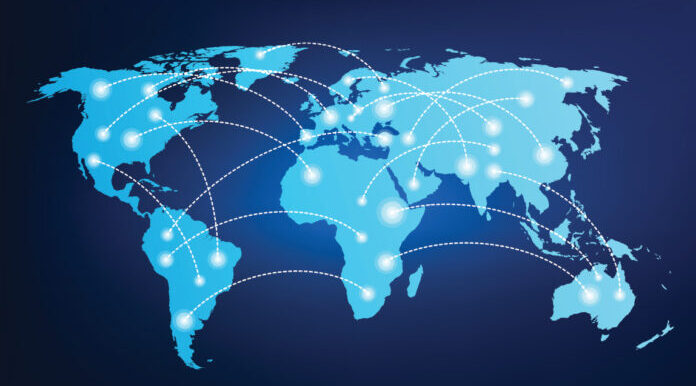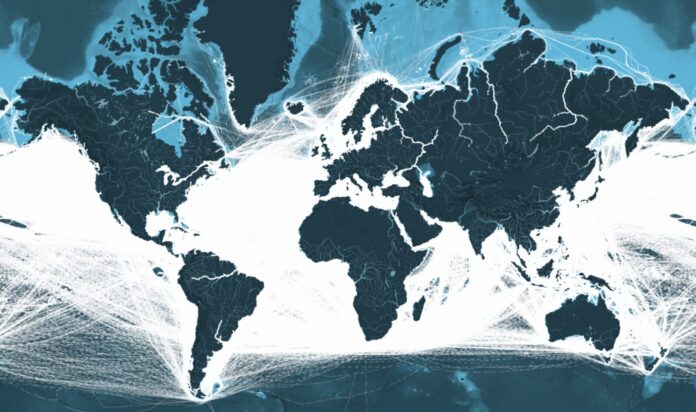
Herbal commodities cover a broad spectrum of botanical resources, including medicinal plants, aromatic herbs, and spices, all of which hold considerable economic, cultural, and medicinal significance worldwide.
Cultivated and harvested for their unique properties and versatile uses, these commodities function as essential ingredients in traditional medicines, cosmetics, food, and several other sectors.
The trade routes these herbal commodities use consist of expansive networks crossing continents, connecting producers to markets, and directly affecting global supply and demand ecosystems. From early times to the current day, these trade routes have been instrumental in affecting the course of civilizations, economies, and global trade.
International trade routes for herbal commodities are not solely about the exchange of goods from one location to another; they represent the socioeconomic and cultural dependencies between nations and regions that have been built up over centuries.
By facilitating the transfer of high-value herbal commodities, these routes aid economic growth, secure livelihoods, foster global relations, and disseminate cultural and botanical knowledge.
They have invariably molded the world as we know it and continue to support the international economy. In this article, we will explore the complex story of these trade routes.
History of International Trade

The history of international trade routes for herbal commodities is tied closely with the development of civilizations themselves. It dates back to early times when routes such as the Silk Road and the Spice Routes were established.
The Silk Road functioned as a network of trade routes connecting the East and West, from China to the Mediterranean Sea. The items traded along this route were not limited to silk but also included a variety of distinct and exotic herbs from the East.
On the other hand, the Spice Routes, primarily maritime, played a primary role in connecting the Eastern Hemisphere to the Western world, facilitating the exchange of spices, aromatic resins, and a variety of herbal commodities between continents.
These routes changed over centuries, influenced by various elements like political upheavals, the discovery of new lands, technical advancements in transportation, and various socioeconomic dynamics.
The advent of colonization modified these routes to suit the interests of the colonizers, often leading to monopolistic control over certain commodities, whereas globalization in later years further modified these routes, extending their scope and complexity.
Today’s Global Trade Routes

In today’s world, the international trade routes for herbal commodities demonstrate a widely interconnected international sphere. The historical routes have been expanded and adapted, accounting for advancements in transportation and commerce.
For example, the Panama Canal and the Mediterranean route are highly regarded as they allow for large-volume shipping of herbal commodities such as mint, thyme, and rosemary from North and South America to Europe and Asia.
Also, the Northern Sea Route across Russia has grown in popularity, considering the quicker transit of items it provides from Asia to Europe.
The countries involved in these trade routes are extensive and diverse. China, known for its rich biodiversity and traditional herbal medicines, exports a wide assortment of herbal commodities such as ginger, garlic, and ginseng, primarily through the East-West shipping lines connecting Chinese ports with Western markets.
Similarly, South Asian countries like India, Sri Lanka, and Indonesia are significant contributors to the global spice trade and also produce herbs like Green Hulu Kratom that are traded globally. Mediterranean countries such as Morocco, Egypt, and Turkey are also key players, exporting a significant amount of aromatic herbs and spices.
One of the top-traded commodities through these routes includes black pepper from India and Vietnam, various types of ginseng from Korea and China, and multiple essential oils from the Mediterranean area.
Herbal Commodities and the Global Economy
Herbal commodities carry a considerable role in the international economy, spanning various sectors such as healthcare, cosmetics, and food industries.
Their trade determines the livelihoods of millions of farmers and traders, particularly in countries like China, India, and other developing countries with rich biodiversities. These commodities also form a substantial portion of these countries’ export revenues, thereby influencing their economic status globally.
For economies heavily dependent on the export of these commodities, efficient and well-regulated international trade routes are critical. Some major players in this sector include China, India, and Germany, respectively recognized for their massive export volumes, traditional practices surrounding herbal commodities, and substantial import and processing capacities.
The herbal commodities trade and its associated trade routes significantly enhance the interconnectedness of the international economy.
Future Trends and the Impact of Technology

Technology is a powerful factor exhibiting a considerable effect on international trade routes for herbal commodities.
Progress in data analysis, AI, and machine learning are expected to simplify supply chain management, improve market demand predictions, and guarantee efficient logistical operations. Developments in transportation technology and storage capabilities also anticipate reduced transit times and improved quality maintenance of commodities.
Concurrently, the emergence of e-commerce platforms is transforming the traditional sphere of the herbal commodities trade. These online platforms facilitate greater market reach, promote direct exchange between producers and consumers, and offer more competitive pricing.
Therefore, technology is set to revolutionize the herbal commodities trade by introducing increased efficiency, transparency, and inclusivity. Future trends predict a heightened focus on sustainable practices, spurred by growing environmental and ethical concerns.
Technological solutions like blockchain could aid in tracking and validating the sustainable origins of these commodities, responding to increasing consumer demand for transparency and ethical sourcing.
Global trade routes for herbal commodities have an extraordinary role in shaping economies. These routes serve as channels linking consumers with diverse, natural products that are used in everyday life, and also support their search for health and wellness.
International trade routes for herbal commodities are an invaluable aspect of the international economy, stimulating economic progress, cultural exchange, and international connectivity.
As the future emerges, technology and sustainable practices are likely to shape these routes further, promising a transforming sphere for the trade of herbal commodities.








